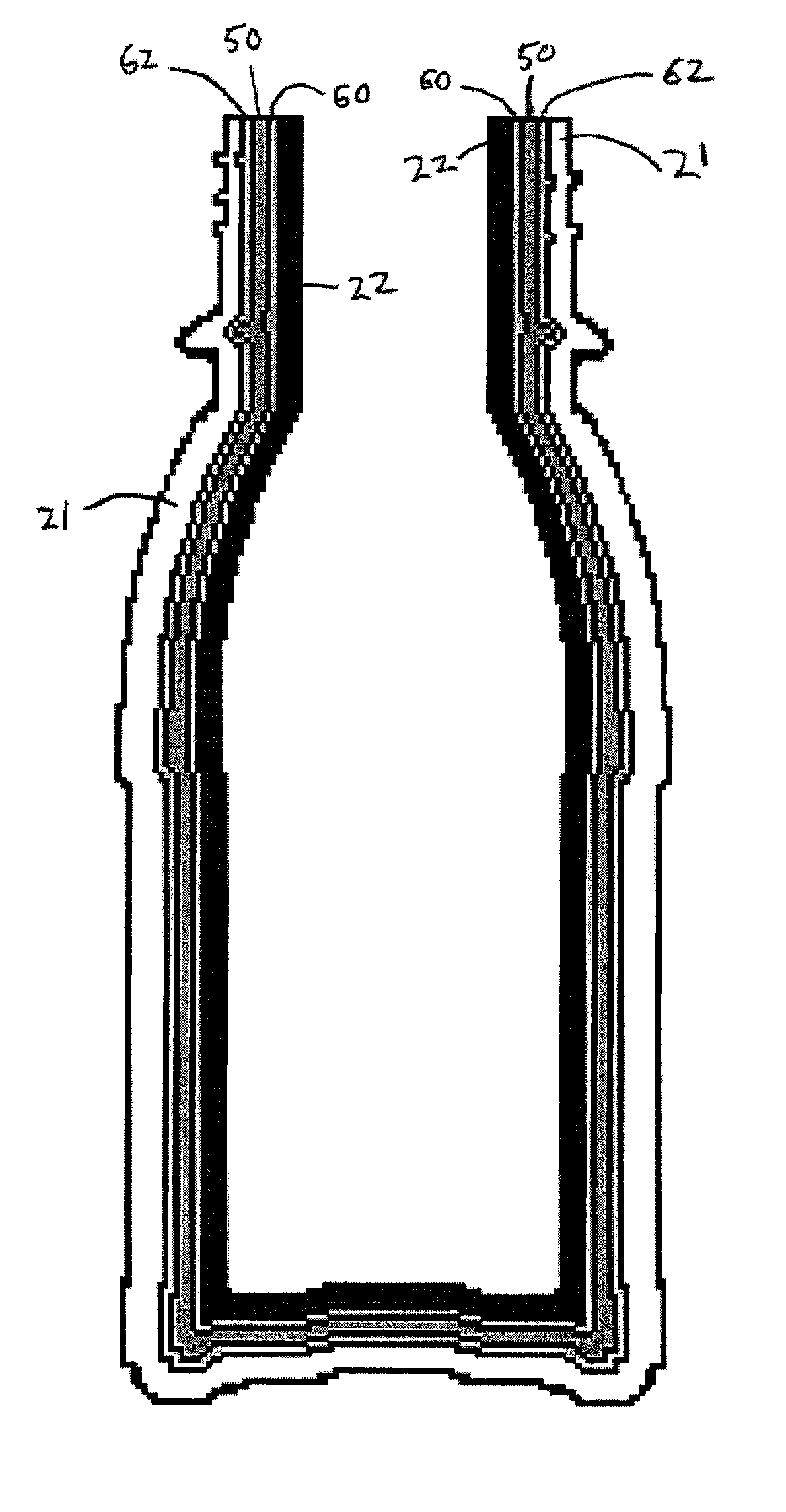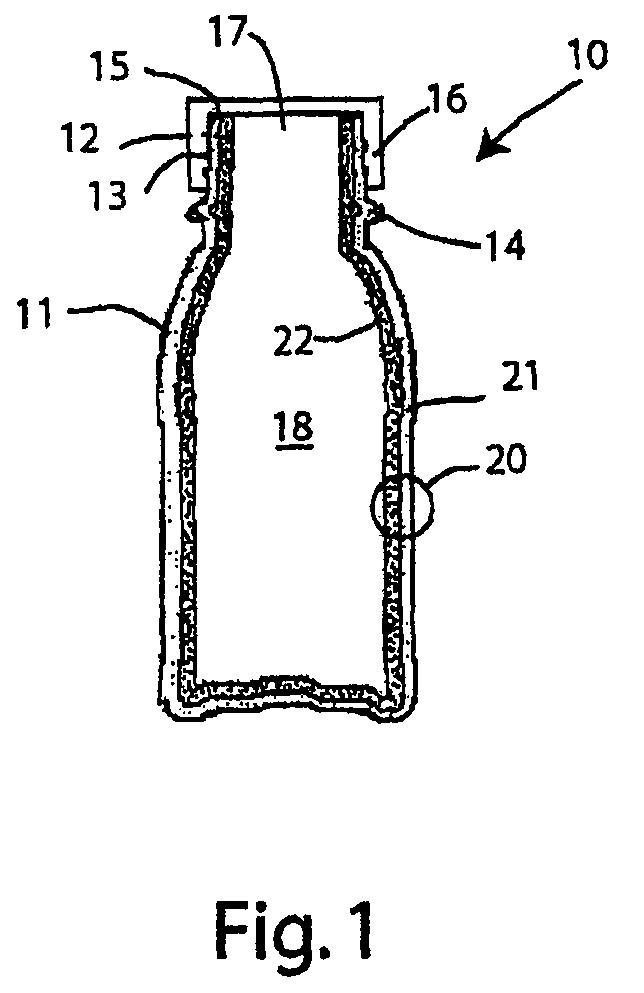Containers intended for moisture-sensitive products
a technology for moisture-sensitive products and containers, applied in the field of rigid containers and reclosable containers, can solve the problems of adverse effects on the use of medicinal products and other ingestible or non-ingestible consumer products, the risk of remaining products being damaged by moisture, and the user's health, etc., and achieve the effect of rigidity and desired strength
- Summary
- Abstract
- Description
- Claims
- Application Information
AI Technical Summary
Benefits of technology
Problems solved by technology
Method used
Image
Examples
example 1
A plastic bottle of the type shown in FIG. 1 was prepared by co-extrusion and blow-molding two resin layers as described above. The outer layer 21 was 30 mils in thickness and consisted of high density polyethylene (HDPE) sold under the trademark Exxon AD-60007. The inner layer 22 was 15 mils in thickness and consisted of a 50 / 50 by weight blend of the same high density polyethylene and a desiccant masterbatch. The masterbatch was a 50 / 50 by weight blend of calcium oxide (Ampacet™ grade 101499) and 21 melt index linear low density polyethylene. The inner layer 22 was 25% by weight calcium oxide.
The resulting bottle was subjected to tests to determine desiccant capacity, recovery from opening and projected product moisture gain, etc.
FIG. 2 is a graph illustrating weight gain versus time for a test carried out on a container of the kind shown in FIG. 1 at 90% relative humidity and at 120° F.
FIG. 3 is graph illustrating weight gain versus time at various relative humidity percentages (...
example 2
A plastic bottle of the type shown in FIG. 1 was prepared by co-extrusion and blow-molding resin layers as described above. Four (4) multilayer structures were made, as identified below. In each structure, the HDPE resin was Chevron-Phillips Marlex 5502BN. Also, WX0226 (Plastic Color Chip PEC14828 white color concentrate used at 6 pounds per 100 pounds of Chevron Phillips Marlex 5502BN) was added to the outer layer in each variable structure.
In this example, a similar bottle to that of Example 1 was prepared, except that the desiccant masterbatch used in Example 1 was replaced by a masterbatch containing 20% by weight of a molecular sieve and 80% by weight of 21 melt index linear low density polyethylene. The molecular sieve was found to speed recovery but was consumed at a faster rate than CaO, that is, the molecular sieve reached its saturation point faster than CaO.
Wall thickness approximately 50 mils.
Molding Process Co-extrusion Blow Molding: 3 Extruders, 8 station Lab Wheel; 2 ...
PUM
| Property | Measurement | Unit |
|---|---|---|
| weight percent | aaaaa | aaaaa |
| thickness | aaaaa | aaaaa |
| RH | aaaaa | aaaaa |
Abstract
Description
Claims
Application Information
 Login to View More
Login to View More - R&D
- Intellectual Property
- Life Sciences
- Materials
- Tech Scout
- Unparalleled Data Quality
- Higher Quality Content
- 60% Fewer Hallucinations
Browse by: Latest US Patents, China's latest patents, Technical Efficacy Thesaurus, Application Domain, Technology Topic, Popular Technical Reports.
© 2025 PatSnap. All rights reserved.Legal|Privacy policy|Modern Slavery Act Transparency Statement|Sitemap|About US| Contact US: help@patsnap.com



